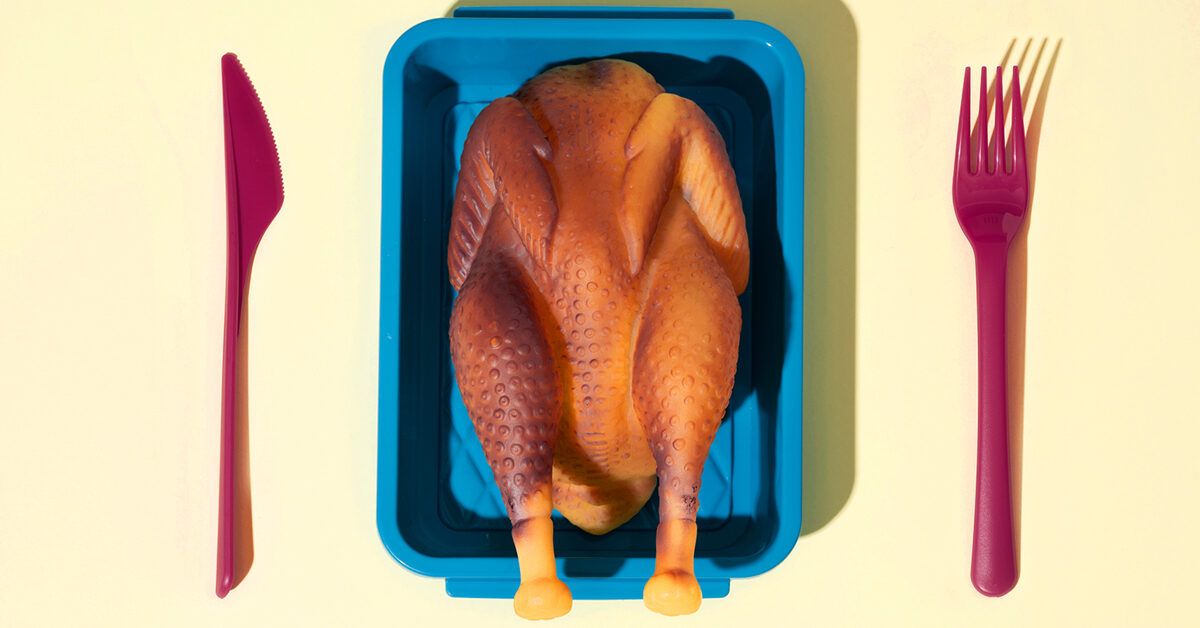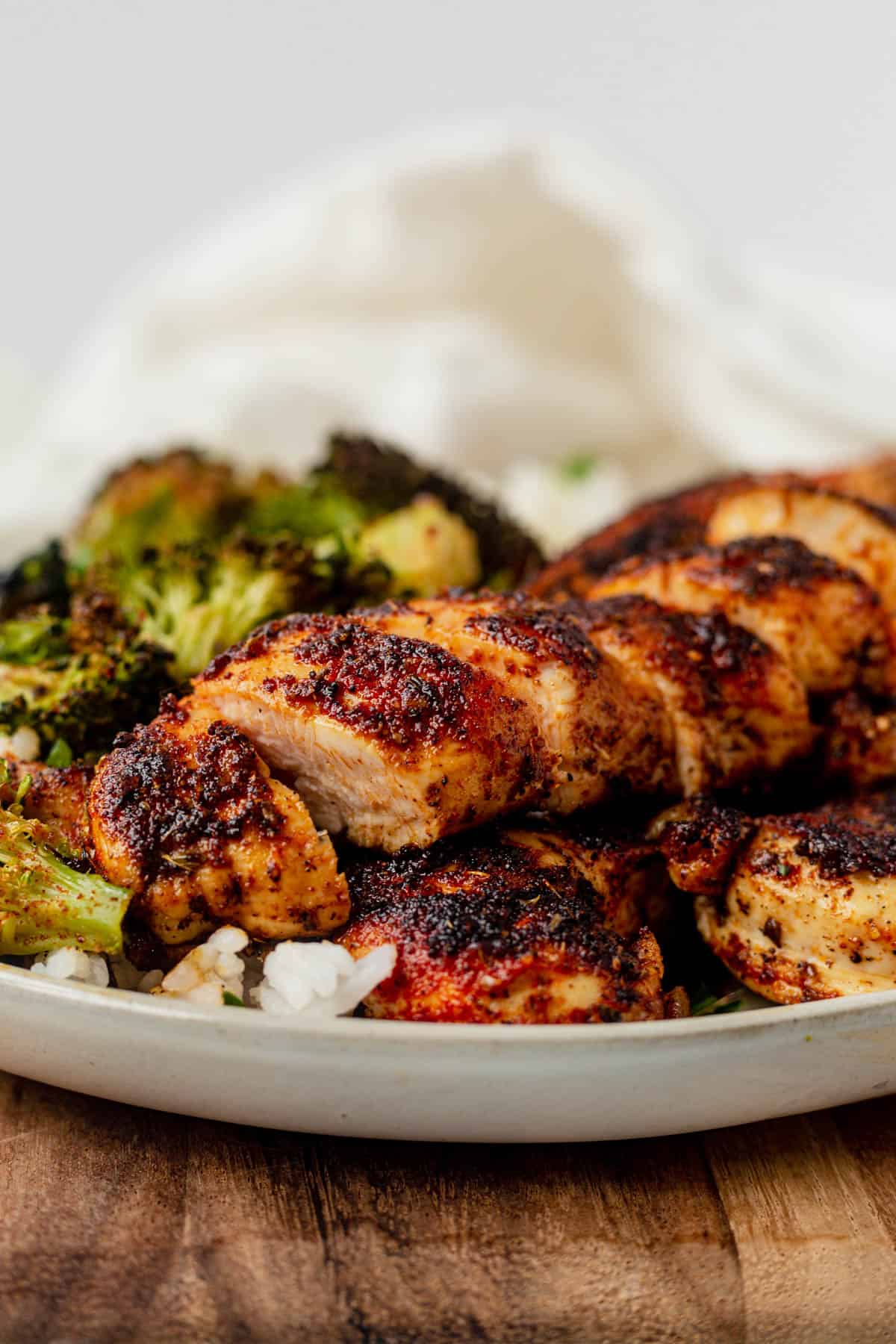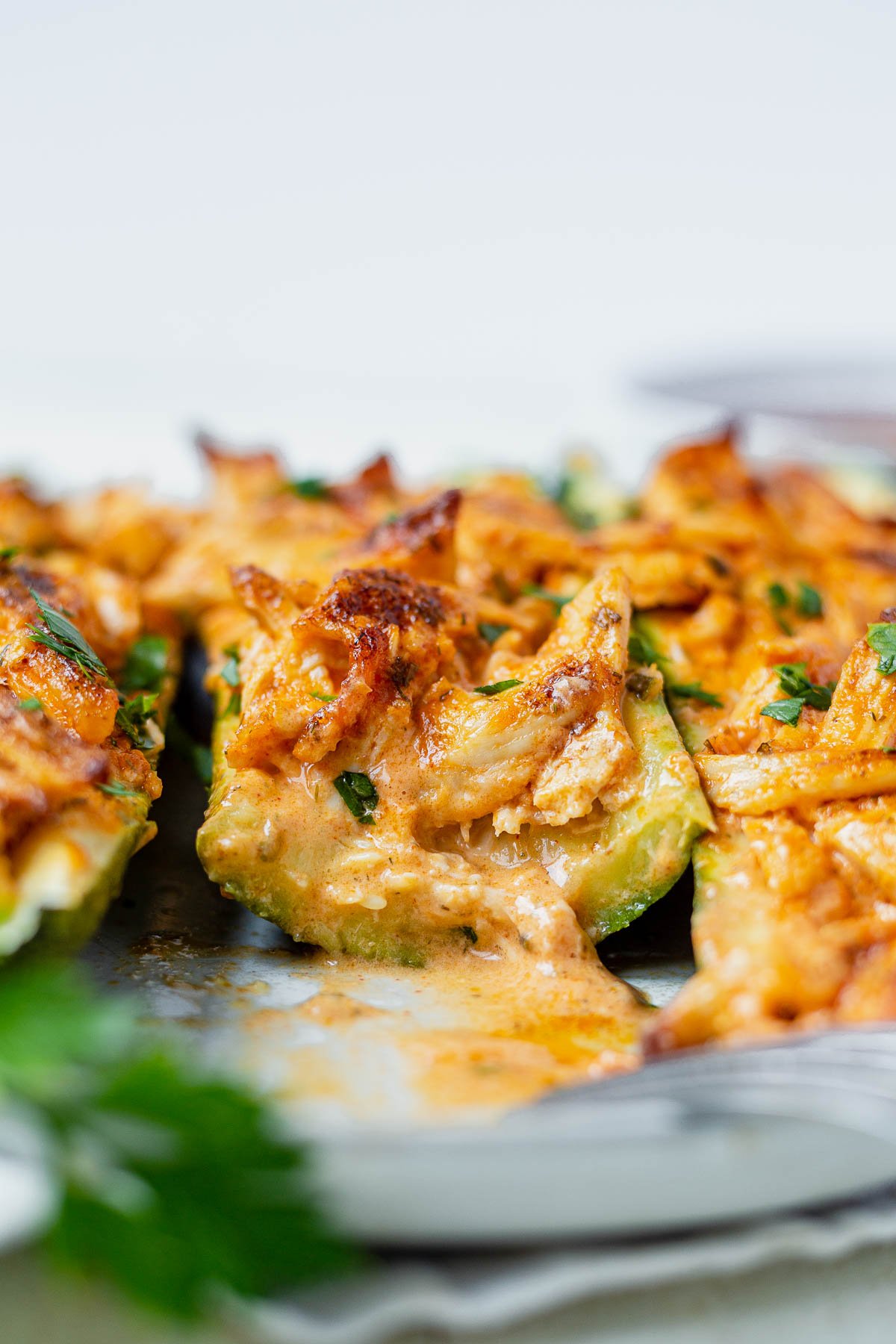You followed the recipe perfectly, but you still end up with tough, rubbery chicken. There are three reasons why your chicken may be rubbery. Have no fear, we’re sharing a few simple ways to prevent and fix rubbery chicken.
When you spend a lot of time, money, and effort on a recipe, the last thing you want is for the chicken to be tough. Chicken is one of the most common protein choices because of its versatility and nutritional value. It’s easy to throw in an Instant Pot Chicken Noodle Soup or shred it in Healthy Chicken Enchiladas.
Rubbery chicken is usually an indicator of overcooked chicken. The longer the chicken cooks, the more moisture it loses, and without moisture, the protein fibers become elastic, AKA rubbery.
Poaching is a common way to cook chicken because it keeps the meat juicy and tender. But it’s easy to overcook poached chicken, which makes it tough. Why does this happen, and how can you keep it juicy?
What Causes Rubbery Poached Chicken?
There are a few common culprits behind rubbery poached chicken
Overcooking
Overcooking is the number one reason poached chicken can turn out rubbery. Chicken breast meat is very lean, so it dries out and becomes tough if cooked too long. Even just a few minutes too many can make poached chicken chewy.
Uneven Thickness
There are often parts of chicken breasts that are much thicker than others. The thinner parts get too done because the thicker parts take longer to cook through. This uneven doneness results in rubbery chicken.
High Temperature
Poaching chicken needs liquid that is slowly simmering, but if the temperature is too high, the meat can become dry and rubbery. At temperatures above 180°F, lean chicken starts to lose water quickly.
Poor Quality Chicken
Chicken breast quality can impact texture. Rapidly grown chicken with white striping or woody breast meat is prone to being rubbery and chewy no matter how it’s cooked.
How to Keep Poached Chicken Tender
Luckily, it’s easy to prevent rubbery poached chicken using these simple tricks:
Don’t Overcook
Use a meat thermometer to closely monitor poaching time. Chicken is perfectly cooked at 165°F. Any higher leads to dryness. Remove it from the poaching liquid as soon as it reaches 165°F.
Pound to Even Thickness
Pound chicken breasts before poaching to an even 1/2-inch thickness. They will cook through at the same rate, so no parts will be overdone.
Poach at Proper Temperature
Keep poaching liquid between 160-180°F. This gently cooks the chicken without squeezing out too much moisture.
Brine Chicken First
Soaking chicken in a saltwater brine before cooking infuses it with flavorful moisture. Try soaking chicken for 30 minutes up to overnight in the fridge.
Buy High-Quality Chicken
Select organic, air-chilled chicken when possible. Inspect meat and avoid any with white striping or extremely firm, knotted texture.
Make Shallow Poaching Liquid
Use a wide, shallow pan and just enough thin poaching liquid to come half to 2/3 up the chicken breast. This allows it to cook quickly and evenly.
Add Acid to Poaching Liquid
A splash of lemon juice, vinegar or wine in poaching liquid helps keep chicken tender. Acids break down chicken’s muscle fibers.
Foolproof Poached Chicken Technique
Follow this reliable process for tender, juicy poached chicken every time:
-
Prep chicken: Trim any excess fat, then pound breasts to 1/2-inch thickness.
-
Make poaching liquid: Use chicken broth, wine or seasoned water. Add lemon juice or vinegar. Keep liquid thin.
-
Preheat poaching liquid: Heat liquid to 160-180°F in a wide skillet. The liquid should be shallow, just half to 2/3 up the chicken breasts.
-
Cook chicken: Gently add chicken breasts to the hot poaching liquid. Cook at a bare simmer, turning once, until chicken registers 165°F on a meat thermometer.
-
Rest chicken: Transfer cooked chicken to a plate. Tent loosely with foil and let rest 5 minutes before serving. The temperature will rise slightly as it rests.
Delicious Ways to Use Poached Chicken
-
Make chicken salad or sandwiches using diced poached chicken.
-
Toss shredded poached chicken with buffalo wing sauce for tangy wraps or pizza topping.
-
Slice poached chicken and serve over fresh greens with vinaigrette for a salad.
-
Cube poached chicken and add it to soups, chilis and pastas.
-
Chop poached chicken and mix it with mayo, celery, relish for an easy chicken spread.
-
Dice and combine with fajita veggies for easy poached chicken fajitas.
So next time you poach chicken, remember these tips to ensure it stays juicy and tender. With the right technique, you’ll never have to deal with rubbery poached chicken again!

3 Reasons for Rubbery Chicken
As mentioned above, overcooked chicken is the most common reason for rubbery chicken because the chicken loses moisture as it cooks. Checking the internal temperature of the chicken is the best way to avoid this. Keep reading for a few tried and true strategies and cooking methods.
The opposite end of the spectrum can also cause rubbery chicken. Undercooked chicken usually has a shiny appearance and a jiggly consistency. This is unsafe to eat and should be fixed before eating.
Slow-growing and organic chicken are ideal when it comes to quality. Two types of chicken that usually turn out rubbery no matter how they are cooked are woody chicken breasts and chicken with white stripes.
White striped chicken: this is a chicken breast that contains white stripes of fat along the muscle fibers. This can happen to chicken breasts, chicken thighs, and other tender pieces.
Woody breasts: woody breasts occur when the muscle fibers are knotted. The increased connective tissue and bulging muscle make them harder and chewier to eat.
A 2019 study found a significant correlation between woody breasts and the chicken’s body weight. As a result of the study, scientists believe the increased growth rate of chickens may be the cause of both white-striped and woody breasts.

How do You Fix Rubbery Chicken?
Protein, fat, and liquid are the three elements that make up chicken. As previously mentioned, the chicken loses moisture (and fat) as the cooking time increases, resulting in a rubbery texture.
The chicken can’t be made over, but there are ways to make it better. You’ll need to add more liquid and fat back to help the chicken become more tender and enjoyable.

The Right Way To Poach A Chicken Breast
FAQ
Why is my poached chicken rubbery?
The most common reason why poached chicken tastes bad is that it was cooked too long—the poaching liquid can easily get too hot. Feb 23, 2025.
Why is my poached chicken so chewy?
Why is my poached chicken tough? If your poached chicken is tough, that means you overcooked it! You either overcooked it entirely, or the poaching liquid was too hot so the exterior cooked through before the interior and became chewy. Never increase the heat of the stove to speed up the poaching process.
What causes chicken to have a rubbery texture?
Also, chicken breast has less fat than other parts of the chicken, and if you cook it for too long, it can dry out (lean or chewy). Without moisture, the protein fibers in the chicken become elastic.
